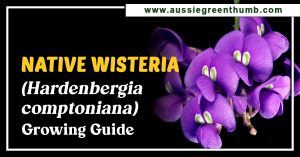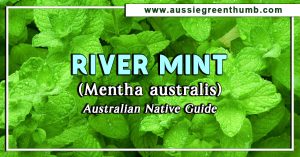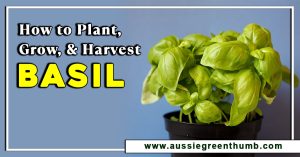If you’re looking for a small vining plant to add to your home, the mini monstera ticks many boxes. Indoors, the plant can grow up to 2.4 metres tall, with leaves 15 to 20cm long. The mini monstera is naturally a climbing plant, so if you have a trellis that needs some greenery, this is the plant for the job.
We’ve covered the basics on how to grow and care for a mini monstera (which you can propagate in both soil and water), explore the common diseases and pests to look out for, and share some valuable FAQs too.
More...
Genus: | Rhaphidophora |
|---|---|
Species: | R. tetrasperma |
Family: | Araceae |
Common Name: | Mini Monstera, Monstera Ginny, Philodendron Ginny, Philodendron Piccolo, Monstera Minima |
Plant type: | Perennial, vine |
Size: | Up to 2.4 metres indoors and 6 metres outdoors |
Sun requirements: | Partial |
Soil pH: | Acidic, neutral |
Soil Type: | Moist but well-draining |
Flower Colour: | Green, white |
Bloom time: | Spring, summer |
Maintenance level: | Low |
Poisonous for pets: | Yes |
Introducing the Mini Monstera
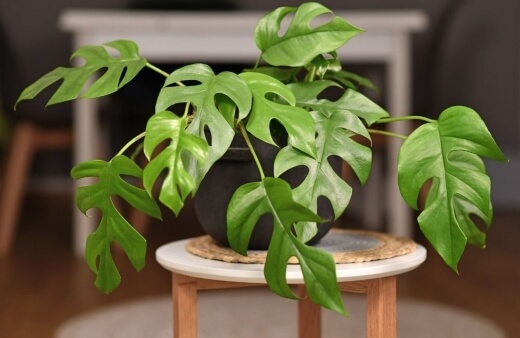
Rhaphidophora tetrasperma, or the mini monstera as it’s more commonly known, is named because of its close resemblance to the monstera deliciosa. However, this plant is not actually a monstera but a part of a different genus called Rhaphidophora.
This genus contains a 100 different species originating from tropical regions in Africa and Asia and is a part of the Araceae family. This explains why Rhaphidophora plants are distantly related to those in the Monstera genus.
Similar to its Monstera relatives, the mini monstera is a great houseplant and does well indoors. Rhaphidophora tetrasperma is actually more closely related to another popular houseplant, the pothos, which is also native to Asia.
The mini monstera specifically belongs to native Thailand and Malaysia, commonly found near Kelantan and Perak and the southern parts of Thailand. It was first found and then identified in the late 1800s.
Features of the Mini Monstera

The leaves of the Rhaphidophora tetrasperma are small, dainty, and a glossy green, with a smooth, lush texture. They are also fibrous with splits and the leaves change structure as the plant matures. The stalks also grow longer and divide as the plant ages.
The mini monstera is evergreen, remaining gorgeous during all four seasons of the year. As a climbing plant, it needs strong external support and can grow as tall as 3 to 5 metres. Its top roots will climb up trees and walls – in fact, they will latch on to whatever gives them stability.
Rhaphidophora tetrasperma vs Monstera deliciosa
Since these plants are quite similar looking, it might be useful to compare some differences between them. The two are part of the same family, Araceae, but Monstera deliciosa is part of the Monstera genus and Rhaphidophora tetrasperma is part of the Rhaphidophora genus.
They are found in different parts of the world - Thailand and Malaysia vs. Southern Mexico and Central America. The leaves of Rhaphidophora tetrasperma are smaller than its relation.
Young Monstera deliciosa usually have very small fenestrations and they might even have none, whereas the mini monstera will always have fenestrations.
On mature monstera deliciosas, the fenestrations are holes or splits with the tips growing towards each other. The Rhaphidophora tetrasperma fenestration tips will be more open and they tend to have fewer holes.
How to Grow Mini Monstera

Propagating Mini Monstera
Mini monstera are easily propagated by using stem cuttings. When you cut your plant back to maintain its size, you can reuse cuttings to create a new plant.
Mini Monstera Propagation in Water
Use a sharp pair of scissors to take a stem cutting from a mature and healthy plant with 2-3 nodes along the stem. Remove any leaves from the bottom 1-2 nodes of the stem, and put the exposed nodes in water – you can use a glass or small vase.


Get Your Free Guide:
Master Growing Australian Natives eBook
A Must Have Complete Guide for Every Australian Garden
Get Your Free Guide:
Master Growing Australian Natives eBook
A Must Have Complete Guide for Every Australian Garden
You need to place the stem cutting somewhere with medium to bright indirect light, and change the water once a week. Once the cutting has roots that are at least 2.5 to 5cm long, you can then transfer the cutting to a moist soil mixture.
Keep the soil consistently moist so the new roots can adjust to growing in soil.
How to Propagate Mini Monstera in Potting soil
Once again, you’ll use a pair of clean, sharp scissors or secateurs and cut off a piece of mini monstera that includes at least one node and a leaf. (See our review on the best secateurs available in Australia.)
You can put the cutting directly into the potting mix and ensure that it covers at least one node. This is where the roots will sprout from. It’s also important that your pot is the right size for the cutting.
After a month, the cutting’s roots should be starting to establish. Give your plant a gentle tug to check for resistance which tells you that the roots have established themselves.
Mini Monstera Care Guide
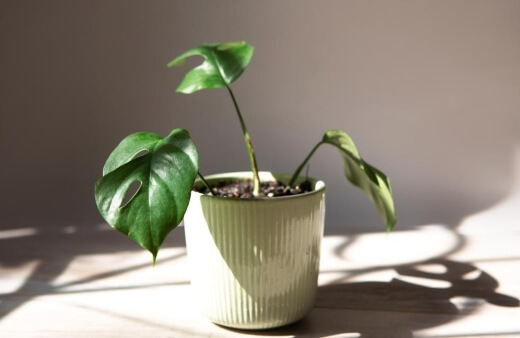
Sun Requirements
Rhaphidophora tetrasperma needs a few hours of bright, indirect light every day. You want to avoid exposing the plant to direct sunlight as the leaves can burn easily.
If your mini monstera starts growing leaves without fenestrations, you’ll know the plant needs more light and should be moved to a brighter spot.
Best Soil for Mini Monstera
Mini monstera need moist but well-draining soil that is rich in nutrients and slightly acidic or neutral. The best soil mix for Rhaphidophora tetrasperma is organic and loamy soil. Stay away from soils that are too clay-like or too sandy.
You can rework a regular indoor potting soil by adding some perlite and orchid bark. You could also combine one part coco coir, one part orchid bark, and one part perlite for amazing results. Adding some peat moss helps improve the texture of the soil.
(Previously, we promoted peat/sphagnum moss. However, in view of its environmental consequences, we've adjusted our stance to favor eco-friendly alternatives that are just as effective, if not better. Refer to our comprehensive peat moss guide If you'd like to delve into its alternatives.)
Watering Mini Monstera
Since the mini monstera hails from tropical regions across Asia and Africa, they enjoy moisture and watering. Their roots are delicate and sensitive to both under watering and over watering. You need to keep the soil consistently moist, but never soaking.
Weekly watering and frequent misting are best. You need to allow the soil to dry out between watering, especially during the winter. During this season, you might only need to water your plant every 2 weeks.
Temperature and Humidity
Warm and humid conditions make Rhaphidophora tetrasperma happy. Normal household temperature levels are great for these tropical plants, but they do need some added humidity when grown indoors.
To increase humidity around the plant, you could place a humidifier nearby. Another easy way to create perfect humidity is to put your plant pot in a tray full of water. When the water in the tray evaporates, it creates the perfect air for your mini monstera to grow beautifully.
We recommend frequent misting of their leaves. Placing your plant close to other plants also increases the humidity of the air around them. The mini monstera doesn’t have any particular temperature needs, as long as temperatures don’t drop below 10 degrees Celsius.
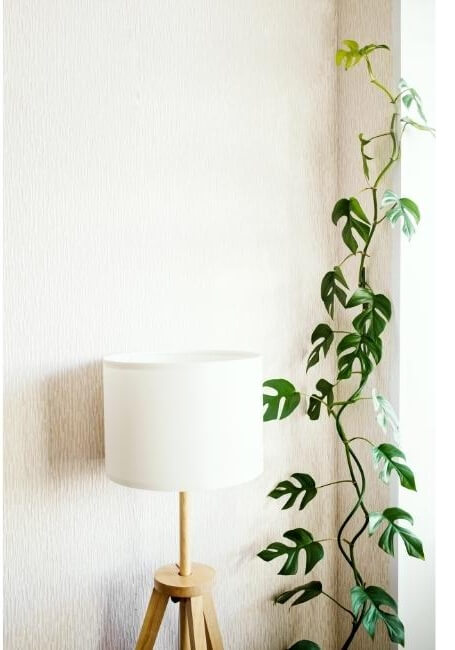
Fertilising Mini Monstera
Mini monstera need to be fertilised during the active growing period. You can apply a balanced, liquid fertiliser once a month in spring and summer to support healthy growth.
An organic fertiliser will have lesser chances of burning and damaging the roots. Have a look at our complete fertiliser guide to help you make the right choice.
You could also make your own fertiliser using every day ingredients around the home and garden. Here are our top tips:
- Have an organic lawn? You can collect your grass clippings which make a great weed fighting mulch. It’s also rich in nitrogen, an essential nutrient for most plants.
- Who knew weeds could be useful. It’s good to know that many of the weeds that you’ll find in your garden are very high in nitrogen and will make an excellent fertiliser.
The trick here is that you can’t just put weeds back in the garden after you’ve pulled them out. You’ll need to make weed tea. Start by filling a 20 litre bucket about a 1/4 full with weeds and the rest of the bucket with water.
Let the weeds soak for a week or two and once the water turns brown (like tea), you have the perfect nutrient-rich weed tea to pour on your garden. - How about making your own compost? (See our review of the best compost bins here) Compost releases nutrients slowly, and a well-composted garden can last up to two years without needing a top up of fertiliser. Compost also helps the soil retain moisture.
- When autumn leaves start building up, you can start putting them to good use. They are incredibly helpful and a real gardener’s friend.
Leaves are full of trace minerals, they attract earthworms, retain moisture, and they make heavy soils lighter. You can mix the leaves into your soil or use them as a mulch which will fertilise your plants and control weeds. - Coffee grounds are not just a pick me up for you – they’re also great as a garden fertiliser. Since Rhaphidophora tetrasperma enjoys slightly acidic soil, you can recycle your coffee grounds to help acidify your soil.
You could either sprinkle the used grounds over the surface of the soil, or make “coffee” to pour on your garden. Soak no more than six cups of used coffee grounds for up to a week to make garden coffee. - Lime is so useful in the garden for many reasons. It helps lower the acidity of your soil and provides plants with lots of calcium. Lime is in fact an all-natural fertiliser that you can buy at the nursery but here’s a way you can save on costs.
Just wash out the eggshells from your kitchen and crush them to use in your garden. Eggshells are 93% calcium carbonate, which is the scientific name for lime.
Repotting Mini Monstera
Mini monstera is a fast grower, and you’ll usually need to repot it once a year. You might even need to repot it twice a year so it doesn’t become root bound. If you notice roots peeping out the drainage holes or if you notice that growth has slowed down completely, it’s probably time to repot.
Repot your Rhaphidophora tetrasperma in a pot the next size up from its current one that has good drainage. You want to repot during spring and summer if possible. Terra cotta pots are great because they dry out quicker which means less risk of root rot.
Mini Monstera Possible Pests and Diseases

Mini monstera plants are easy to grow indoors and are generally quite problem free. Some problems can pop up due to improper watering or lighting conditions but these are easy to fix. Then of course there are some unwanted house pests to look out for too.
Pale Looking Leaves
Scorched foliage or pale leaves mean your plant is getting too much direct light. Mini monsteras have less of a waxy layer than the monstera deliciosa so rather move them somewhere more shaded.
Spotted or Patchy Leaves
Spots or patches on the leaves could indicate a few things. If the spots are brown and soft you are probably over watering. Lighter coloured patches could mean shock from cold water so rather use room temperature water.
Brown and Crispy Edges
Brown edges on the foliage usually means the air around it is dry. Maybe your mini monstera is close to a heater, air conditioner or draught but it could also be inconsistent watering. Ensure that you are keeping the soil consistently moist, and try increasing the humidity around the plant with a humidifier.
Small Leaves (New Growth)
Since it is a climbing houseplant after all, you might need to trim your Rhaphidophora tetrasperma when the vines become very long. This helps to keep the plant healthy. If you find that the plant’s new leaves are small, it might not be getting enough light or humidity.
Reduced fenestrations in Mini Monstera
One of the main features of a mini monstera plant are its fenestrations or splits in the leaves. If the plant has low light or lack of support from a pole or trellis you might see a reduction in the number of splits. Simply move the mini monstera somewhere brighter and add a support.
Mini Monstera Yellow Leaves
Yellowing leaves are a natural part of the life cycle of a mini monstera. The older leaves will yellow and drop but if you notice many leaves dropping suddenly, the plant might be in a cold draught or you may have been over watering for a length of time.
A lack of light is another cause of yellowing leaves. Try moving your plant to a brighter place and cut back on watering slightly to see if the plant improves.
Curling Leaves
Rhaphidophora tetrasperma have sensitive roots and if the plant is left to dry out for too long, the roots could start drying up and dying. This causes the leaves to curl and droop downwards due to lack of moisture.
If the roots are too dried out, watering your plant will unfortunately not solve the issue as it won’t have the root system to absorb the water.
If this does happen, you can remove your mini monstera plant from the soil and place it in a vase with water for a few weeks. This will allow new roots to grow, in the same way you would propagate stem cuttings.
Once the root system is established, you can transfer the plant back to moist soil.
Mini Monstera Root rot
Root rot is caused by consistent over watering. Remember to feel the potting mix with your finger first before you water your mini monstera. It’s a good test to see if your plant is still too wet to be watered again. Also, be sure to check our guide on the best potting mix here.
Pests to Look Out For
Lack of humidity is one of the main culprits for pests invading your mini monstera. Look out for things like red spider mite, thrips and aphids, especially in warm, dry conditions.
Of course keeping the humidity up is a good start but if the pests are already there, you can treat the plant with insecticidal soap or neem oil. You should repeat this process weekly and keep the plant separate from other plants until it’s completely pest-free.
Before starting with treatment, first give your plant a blast of water with a hose to wash away most of the bugs.
Mini Monstera Frequently Asked Questions
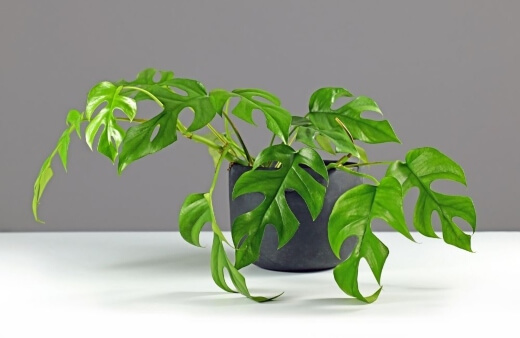
Are mini monsteras considered rare?
Mini monsteras are considered rare but they are becoming more widely available as they grow in popularity.
What does the name Rhaphidophora tetrasperma mean?
The name Rhaphidophora means “needle bearing”, which actually refers to the needle-shaped crystals of calcium oxalate, called raphides that make all parts of the plant unpalatable and toxic. Tetra means “four”, and sperma means “seeded”.
Does the mini monstera have any interesting uses?
This plant has actually been shown to have anti-malaria properties. Six elements found in the plant’s stem and leaves have a significant effect on the parasites that cause malaria.
Does the Rhaphidophora tetrasperma produce flowers?
Rhaphidophora plants have flowers with no floral envelope and they lose their petal-like collar after flowering. They also produce many sphere shaped seeds.
Flowers are usually seen in mature tetrasperma plants that have grown outside, so you won’t experience any blooms if your mini monstera is a houseplant. The flowers are tiny, white, and lack petals.
How long will a mini monstera live?
This plant has a perennial life cycle, and has an expected life span of three or more years depending on their care, soil, climate, and environment.
Start Growing Mini Monstera Today
If you’re in need of an easy-going plant that offers the feel of an urban jungle, a mini monstera might be a good choice for you. They are sizable enough to make a statement, but not demanding and time consuming when it comes to a care routine.
You won’t get flowers if growing indoors, but you will get evergreen joy throughout the year, and some good looking leaves. Just make sure your pets don’t get too excited about your latest home addition, as the mini monstera is toxic.
In a class (or genus rather) of its own, the mini monstera, although similar looking to its distant monstera cousins, has established its own unique identity and charm.
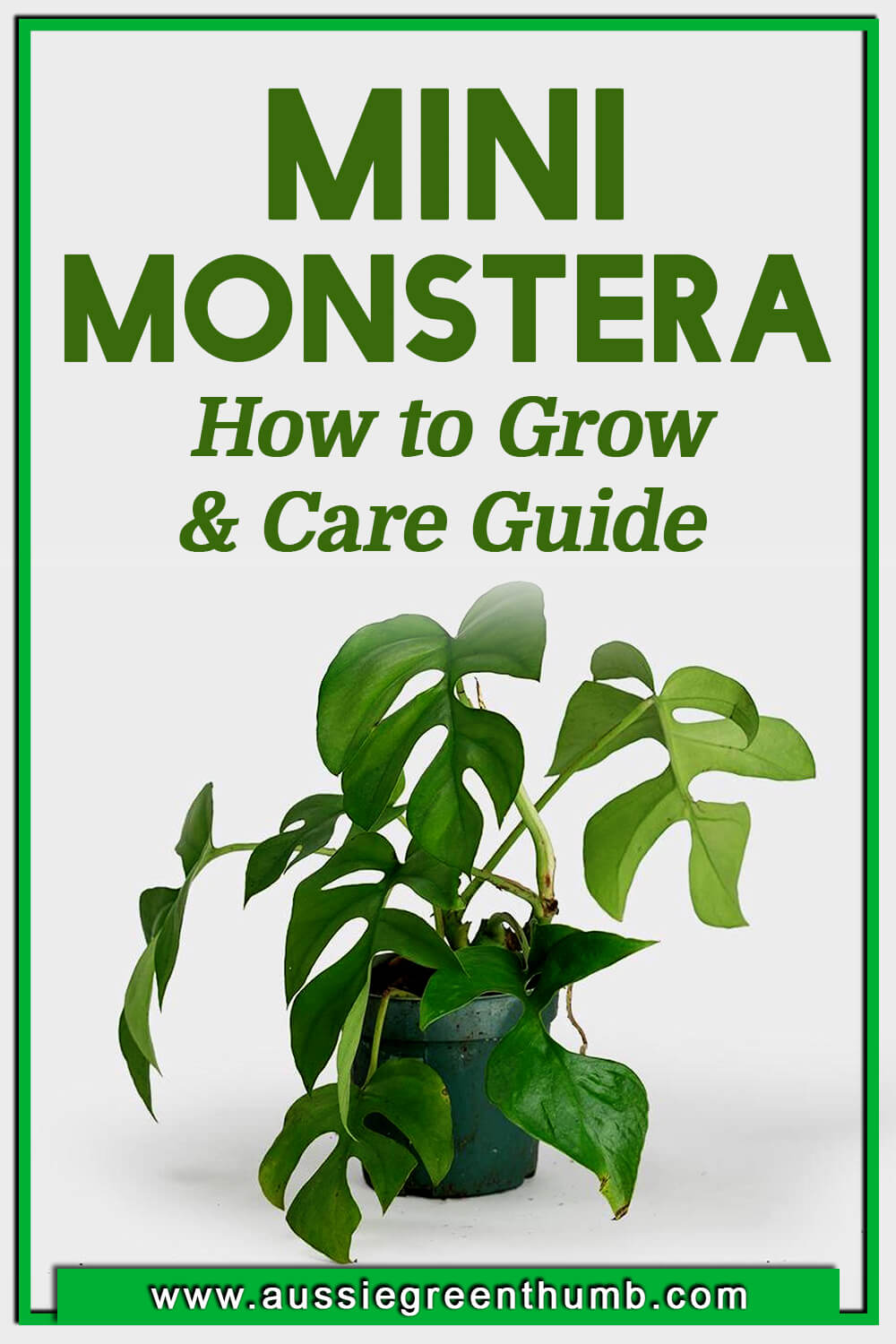
Published on April 8, 2022 by Maisie Blevins
Last Updated on February 26, 2025

